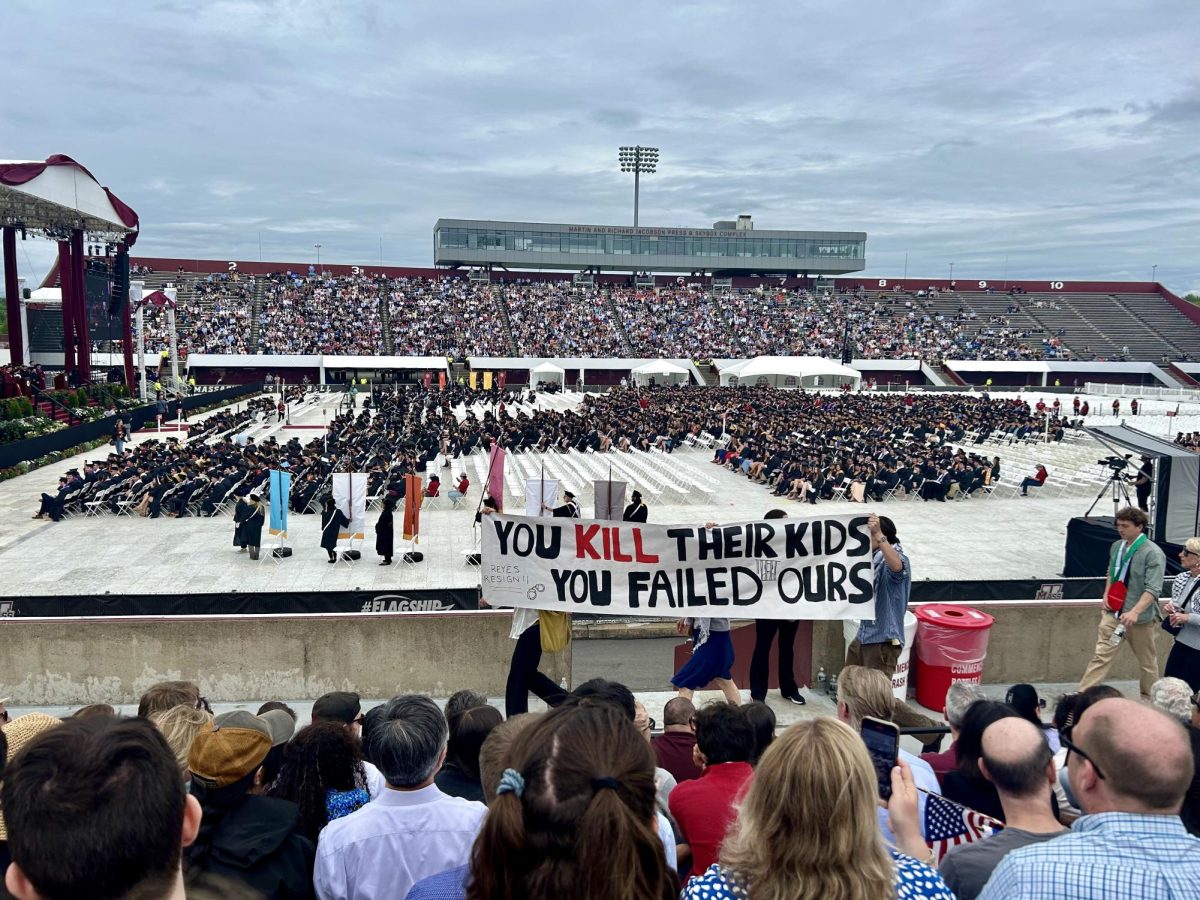When University of Massachusetts senior political science major Reanne Malesky was applying to college, she knew money would be a large determining factor in where she chose to pursue a degree.
“I got into [the University of Connecticut] and I got into [UMass], but neither school offered me significant financial aid packages,” said Malesky, whose top college choice was UConn. “Community college was appealing because I could go for two years and save a ton of money.”
Students are increasingly faced with the problem of how to pay for a college education, according to a recent study by researchers at the University of Michigan, which found that there is a gap in college completion between upper and lower income students.
Students who come from families in the highest income quartile are twice as likely to graduate from college as those in the bottom quartile, according to the study, which also showed a higher college entry and graduation rate for students from higher income families.
Instead of beginning their college education at a four-year university, some students, like Malesky, are choosing to attend community college for two years, before transferring to a four-year university in order to save money.
Malesky grew up in Merrimac before moving to Haverhill in her senior year of high school. Malesky said college was important in Merrimac, where the estimated median household income is $71,676 – higher than the average for the state. Approximately 30 percent of Merrimac residents have earned an associate’s or bachelor’s degree, according to town data.
Malesky said there was a lot of pressure for students to go directly to college after high school.
“When everyone got their acceptance letters it was like, ‘Oh, what college are you going to?’ There wasn’t a lot of talk of people working after high school. The idea of working after high school was shunned,” Malesky said. “I got negative responses to going to community college. I had a lot of teachers question whether that was a good decision.”
Although Malesky felt she was academically prepared for college, affording it, she said, was another story. She couldn’t afford to take the SAT preparation classes that most of her friends took.
“I remember a lot of [my friends] were shocked that I wasn’t [taking] them. I also only took the test once because it cost money. I didn’t even buy an SAT prep book because that was expensive,” she said.
Despite having less debt, paying for college hasn’t been an easy road for Malesky. She considers her family in the lower-middle income bracket, which she said puts her in an awkward financial situation.
Her family cannot afford to help pay for her college education, but her parents earn too much for her to get enough federal financial aid money to pay for school, she said. And, she noted, she is not eligible for a Pell Grant to help pay for her education.
In order to meet the needs of students who are academically eligible to attend college, UMass President Robert Caret announced earlier this month that UMass will be spending a record $158 million of its own funds on student financial aid beginning this year.
Malesky attended Northern Essex Community College in Haverhill for two years to get her associate’s degree. She then transferred to UMass where she was guaranteed admission and financial aid after graduating from Northern Essex with a 3.62 grade-point average.
Attending a community college for two years, she noted, relieved her of part of the financial burden of paying for school. She now works part-time at The Sub and Pizza in Amherst and has received grants and federal loans to pay for living and school expenses.
“I’m paying for college 100 percent on my own,” said Malesky. “I receive some grocery money every now and then, but there’s no parental support. All my loans are in my name.
“Financially, I don’t regret [going to community college],” Malesky continued. “I’m only graduating with $25,000 in debt for two degrees – an associate’s and a bachelor’s. I look around and see people with much more debt.”
The increase in financial aid provided by the UMass system is in response to an increase in student debt. Last year, UMass spent $133 million on financial aid.
Caret, the UMass president, also called for the state to provide 50 percent of general education funding, an increase of 5 percent, according to the release.
A financial study by UMass also found that 98 percent of all undergraduate, in-state UMass students have financial need and 62 percent of in-state UMass students are currently receiving need-based aid, according to the release.
And the study also found that average student debt at the University has jumped over the past five years, from $15,000 to $25,944, respectively.
Despite Caret’s efforts to increase financial aid through grants and loans to students, Malesky said that UMass cut her grant money for the 2011-2012 academic year, which forced her to take out loans to cover the cost of school.
Malesky’s father earned about $2,000 more last year, which increased her expected family contribution for paying her tuition and fees, she said. She was moved into a different financial aid bracket and her grant from UMass was cut by $7,500.
Malesky said she attempted to appeal this decision, but her appeal was not accepted, and she took out a loan in order to make up the difference.
Sarah Hardy can be reached at [email protected].






